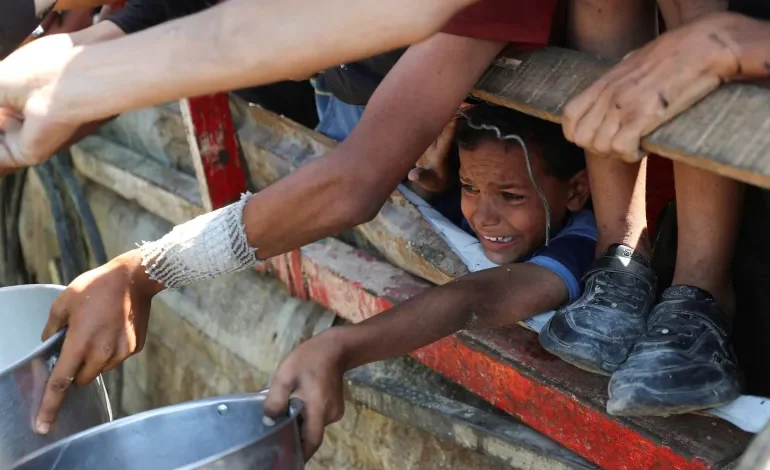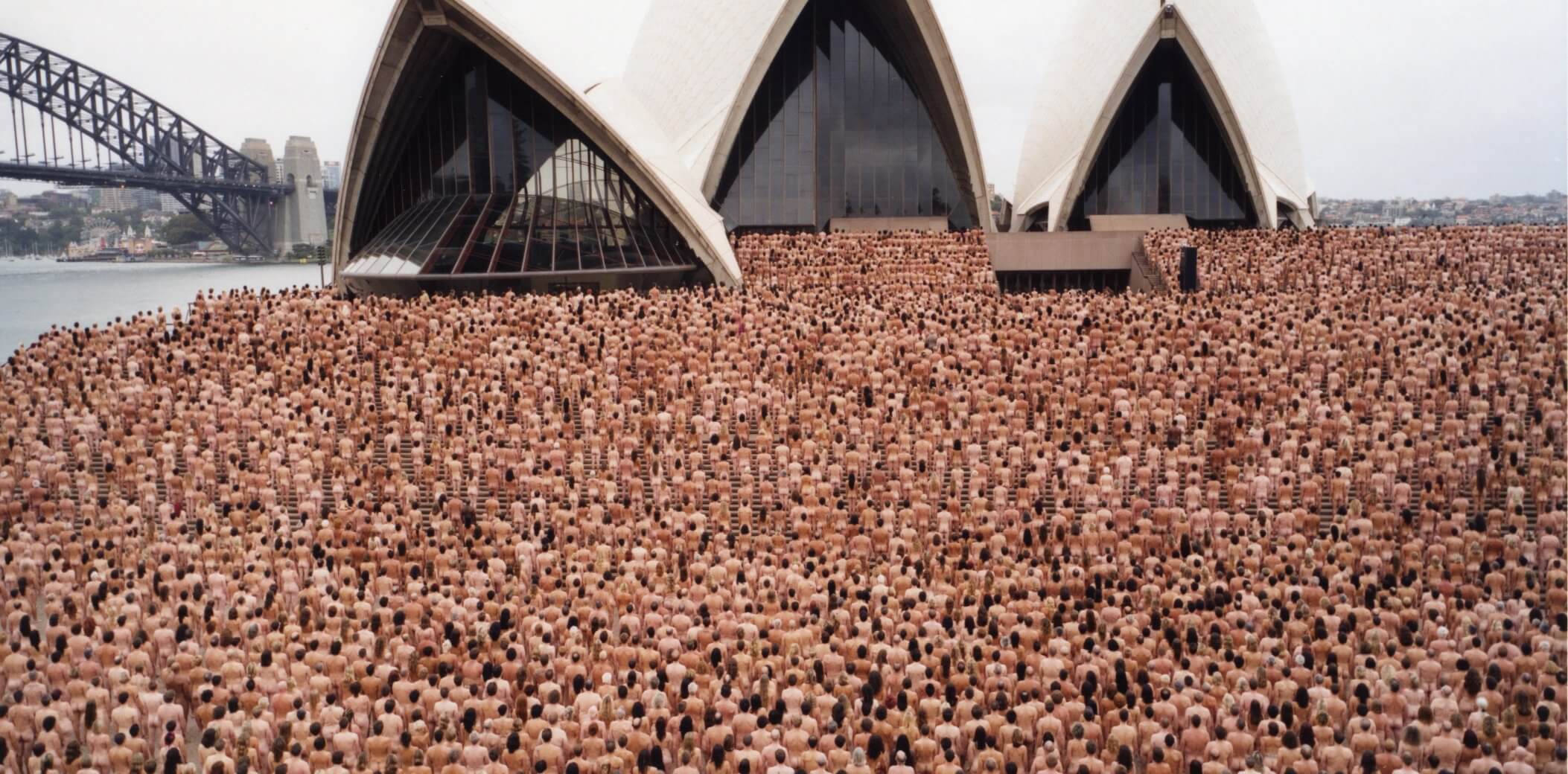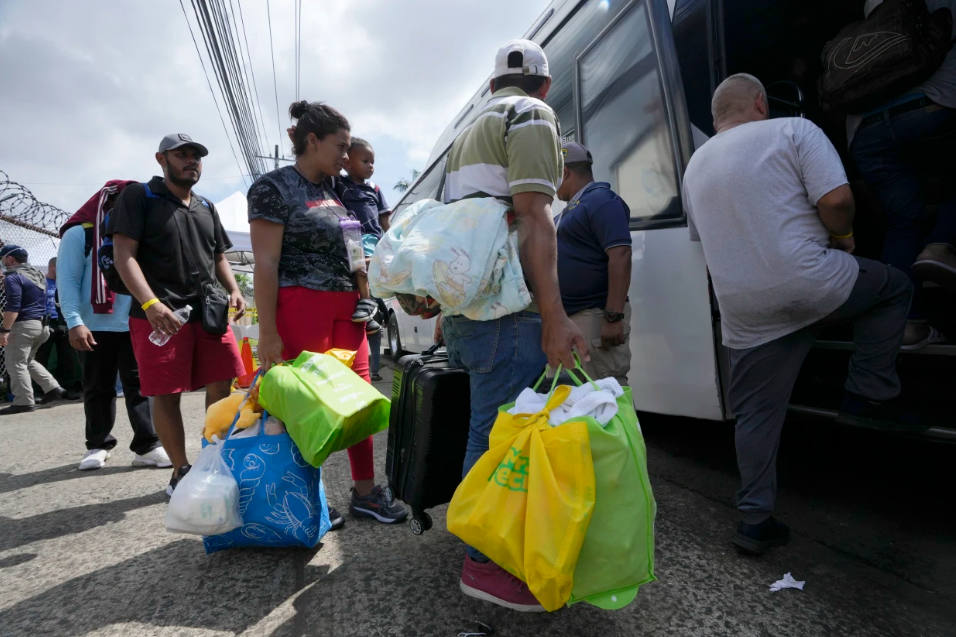Starving for Survival: Gazans Killed While Chasing Food as Supplies — and Burial Shrouds — Run Out

The grim toll in Gaza keeps climbing — and not just from bombs. On Monday, at least 40 Palestinians were killed, 10 of them while trying to get desperately needed food aid, and five more reportedly died from starvation, according to Gaza health officials. With the crisis deepening, even burial shrouds are now in short supply — mourners have resorted to wrapping bodies in patterned blankets.
“They go out looking for flour,” said Bilal Thari, a 40-year-old Gazan at Al Shifa Hospital, “and they come back as martyrs, injured, or not at all.”
Two deadly incidents near food distribution centers run by the US-backed Gaza Humanitarian Foundation (GHF) in central and southern Gaza added to a horrifying pattern. Since the GHF started operating in May, over 1,000 people have reportedly been killed trying to get aid, with many hit by Israeli gunfire, according to the UN.
Israel denies firing on aid seekers in Monday’s southern Gaza incident but has not commented on earlier events. Still, humanitarian agencies warn: what’s happening in Gaza isn’t just a crisis — it’s a famine in motion.
Meanwhile, Israeli airstrikes and gunfire continue. A total of 74 people were killed Monday, say hospital sources, including 36 near food sites. On Sunday, 13 more were gunned down while waiting at the Zikim border crossing for UN aid trucks.
As Gaza’s supply lines crumble and border restrictions persist, the symbolic white burial shrouds — a staple in Islamic funerals — are now scarce. Thari says the misery is total:
“There’s no food, no peace, no life. Women are on the streets. We’re all starving.”
Israel blames Hamas for Gaza’s suffering, saying it’s made efforts to allow more aid through — including air drops and temporary pauses in fighting. According to COGAT, Israel’s military body overseeing aid, 1,200 trucks delivered 23,000 tons of aid over the past week. But many trucks reportedly never made it to distribution centers, and some were looted by desperate civilians and armed gangs.
Still, the UN and aid groups say that’s not nearly enough. Gaza needs around 600 trucks daily — the same amount that used to enter before the war. Right now, many distribution sites are being described as “death traps.”
Gaza’s Health Ministry says that since the start of the war, 180 people — including 93 children — have died from hunger. On Monday alone, five more succumbed to starvation or malnutrition-related causes. Hospitals are overwhelmed and woefully understocked. Some children are being fed water mixed with chickpeas in place of infant formula, which has been blocked from entering the enclave.
At hospitals like Al-Aqsa Martyrs in Deir el-Balah, even aid drops are turning deadly — a nurse was reportedly killed Monday when a food box fell on him during an airdrop.
International outcry is growing, especially after haunting images of starving Israeli hostages surfaced over the weekend. In one video, a young man, skeletal and weak, says he’s digging his own grave. The footage has only added pressure on Israeli Prime Minister Benjamin Netanyahu, who now faces growing protests demanding a ceasefire.
The United Nations says the “worst-case scenario of famine” is no longer hypothetical — it’s already unfolding in Gaza. With more than 60,000 Palestinians killed in Israel’s military campaign since October, and an average of 28 children dying per day, according to UNICEF, the numbers paint a terrifying picture of how aid has become as dangerous as the bombs.
As one doctor put it from London, describing Gaza’s hospitals:
“We’re seeing a steep uptick in gunshot wounds near aid centers. These people will need long-term care — but there are no beds, no supplies, and no relief in sight.”
With input from Al Jazeera, Reuters, BBC, and NPR.









The latest news in your social feeds
Subscribe to our social media platforms to stay tuned